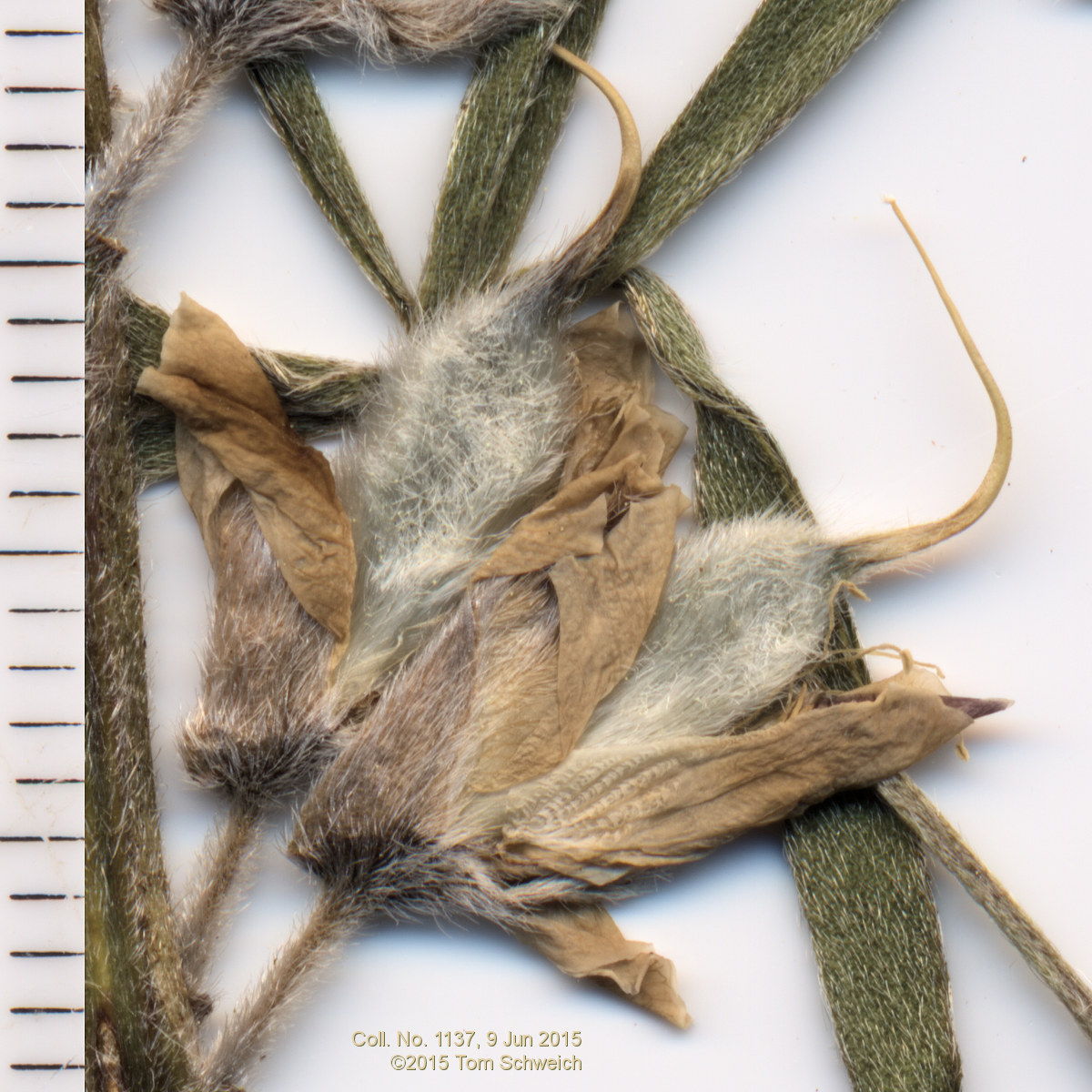 Eastern Mojave Vegetation
Eastern Mojave Vegetation
 Eastern Mojave Vegetation
Eastern Mojave Vegetation
| Fruit of Coll. No. 1137, Lupinus argenteus var. argenteus |
|
|

If you have a question or a comment about this photograph you may write to me at: tas4@schweich.com I sometimes post interesting questions in my FAQ, but I never disclose your full name or address. |

Scanned 14 October 2015. Coll. No. 1137, 9 Jun 2015, characters observed: Perennial herb, to 50 cm., caulescent, generally appressed hairy, except as noted; Leaves, cauline, petiole 25 mm., appressed hairy, blade, palmately compound, leaflets, 7, 40 mm. × 6 mm. wide, lanceolate, glabrous adaxially, appressed hairy abaxially; Inflorescence, 15-20 cm., elongating as it matures; Pedicel, 3 mm., densely spreading hairs; Calyx, 5 mm., hairy, persistent; Flowers, spur, <1 mm., corolla, white with blue-lavender stripes, banner, 11 mm., recurved from a point 4 mm. below apex, back lightly hairy, wings, 12 mm., keel, shallow, glabrous except few small hairs below, pouched down mid-keel; Style, 9 mm., persistent; Fruit, 10 mm. × 3 mm. high, shaggy hairy. Weber & Wittmann (2012) use “keel glabrous” as a key character. Harrington (1954) and Ackerfield (2015) neither use keel decoration as a key character nor do they describe the decoration of the keel. California floras, e.g., Munz (1965) and Baldwin (2012), use a ciliate keel, as a key character to identify L. argenteus. Welch, et al. (1993) note that the keel can be glabrous or variously ciliate.
Article records that use this photograph:
Other photos about Species - Fabaceae or Lupinus argenteus argenteus.
|
|
Date and time this page was prepared: 4/14/2024 5:46:24 PM |